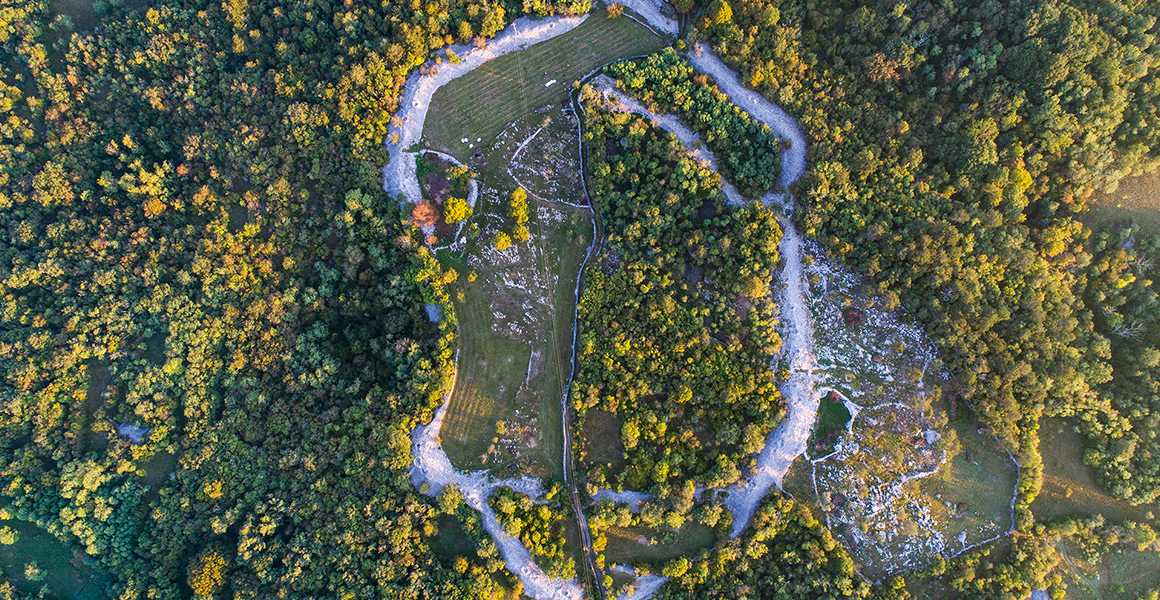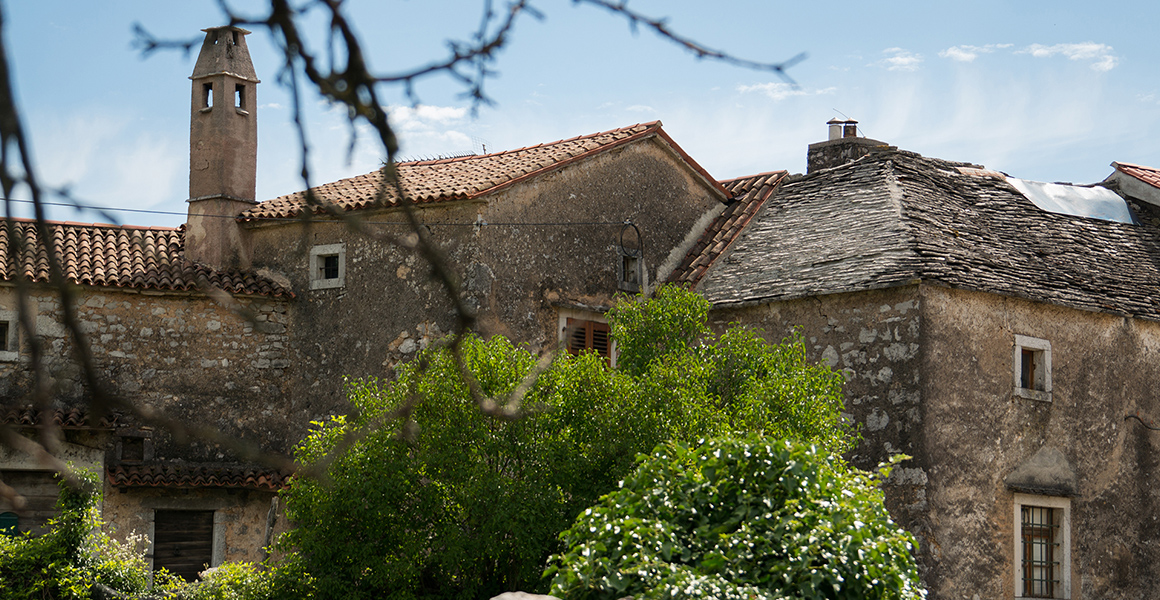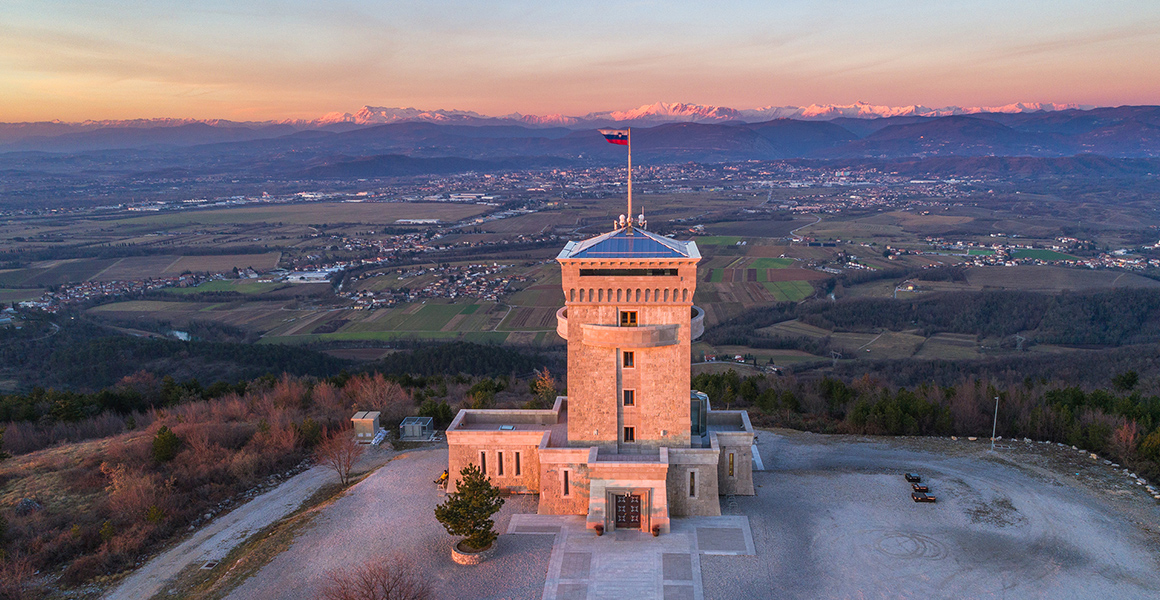From Štanjel, the third stage takes you through typical karst landscape, among vineyards and commons to Kobljeglava where you can visit a traditional prosciutto producer and taste vintage karst prosciutto. In the nearby village Volčji Grad there's the natural science trail through Debela Griža, remnants of an encampment from the Bronze and Iron ages. On a local farm you can enjoy a wholesome lunch. From there the way leads past Komen and the picturesque village Škrbina under the tallest hill in these parts, Mt Trstelj, to the very edge of the primordial Karst, the Cerje. The goal of this final stage rewards you with breathtaking views on all sides of the sky, inviting to the visit of the Monument of Peace at the crossroads of the Walks of Peace commemorating the events of the First World War.







